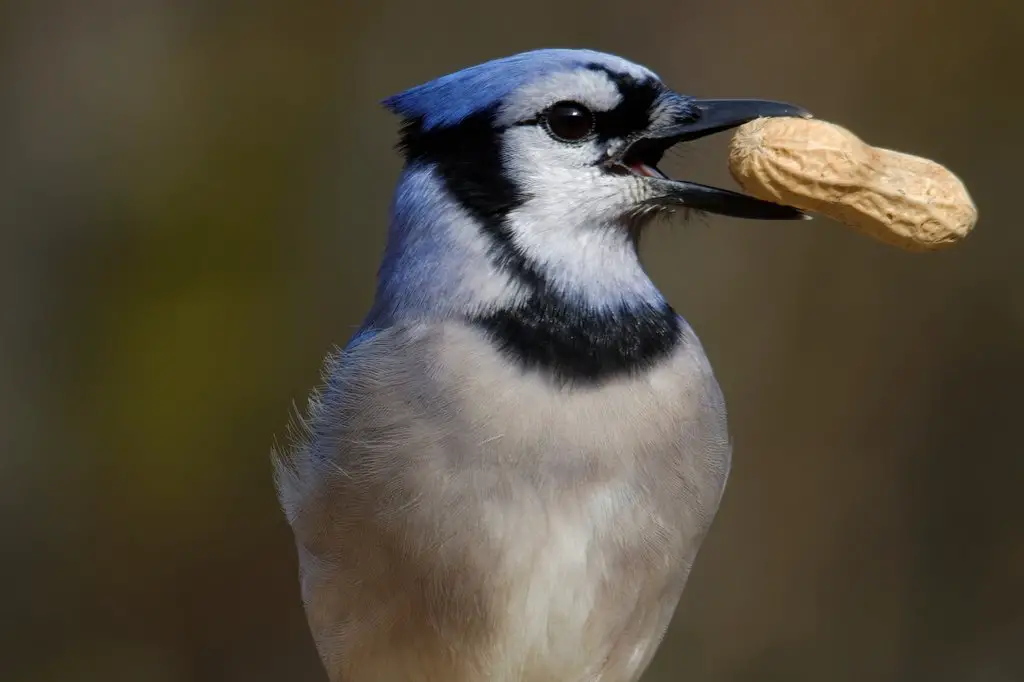
What Do Blue Jays Eat? Blue Jays, with their vibrant blue feathers and lively calls, captivate us with their presence.
In this article, we embark on a culinary journey to uncover the dining habits of these fascinating birds, shedding light on their omnivorous nature and the significance of nuts, seeds, insects, fruits, and berries in their diet.
From their opportunistic feeding behavior to the vital role of food sources in their conservation, we’ll reveal how understanding their dietary preferences can bring these winged wonders to our very own backyards.
Get ready to feast your eyes on some surprising facts!
Table of Contents
- 1 Key Takeaways
- 2 What Do Blue Jays Eat
- 3 Blue Jay Feeding Habits: An Overview
- 4 The Omnivorous Nature of Blue Jays
- 5 Nuts and Seeds: A Staple in the Blue Jay Diet
- 6 The Role of Insects in a Blue Jay’s Menu
- 7 Exploring Blue Jays’ Love for Fruits and Berries
- 8 Surprising Prey: Blue Jays and Small Vertebrates
- 9 Attracting Blue Jays to Your Backyard with Food
- 10 Understanding the Nutritional Needs of Blue Jays
- 11 Conservation and the Importance of Providing Food Sources
- 12 Tips for Creating a Blue Jay-Friendly Feeding Station
- 13 Frequently Asked Questions
- 14 Conclusion
- 15 Author
Key Takeaways
- Blue Jays are omnivorous, consuming both plant and animal matter.
- Nuts and seeds are a significant part of their diet, providing essential fats and proteins.
- Insects play a crucial role in the Blue Jay’s diet, providing protein and essential nutrients.
- Blue Jays also have a fondness for fruits and berries, aiding in seed dispersal and seed germination.
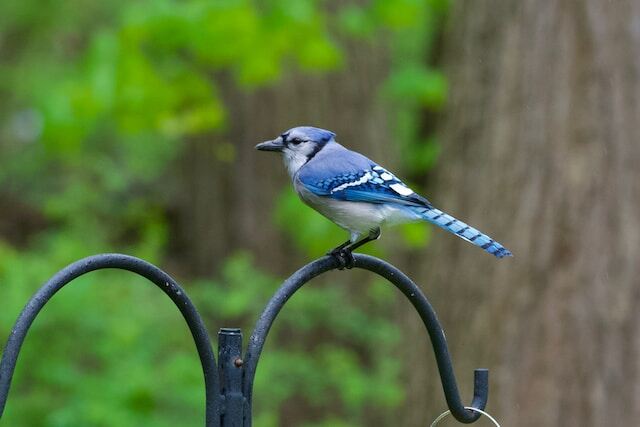
What Do Blue Jays Eat
Blue Jays have an omnivorous diet, consuming a variety of foods. They enjoy nuts, seeds, insects, fruits, and berries.
Their opportunistic nature allows them to adapt to different habitats. By providing suitable food sources, we can attract and support these vibrant birds in our surroundings.
Blue Jay Feeding Habits: An Overview
Blue jays are known for their diverse and adaptable feeding habits. Their foraging behavior is influenced by a variety of factors, including the availability of food sources, environmental conditions, and competition with other bird species.
Blue jays have a close relationship with humans and are often found near residential areas and parks where they can scavenge for food.
They are opportunistic feeders and will consume a wide range of items, including nuts, seeds, insects, fruits, and even small vertebrates.
Blue jays are known to cache food for later consumption, which helps them survive during periods of scarcity.
Their feeding habits also exhibit seasonal changes, with a preference for nuts and seeds in the fall and winter, and a greater reliance on insects and fruits during the warmer months.
This adaptability allows blue jays to thrive in various habitats and ensures their survival throughout the year.
Transitioning into the subsequent section about the omnivorous nature of blue jays, it is important to note that their diverse feeding habits contribute to their ability to obtain nutrition from a wide range of sources.
The Omnivorous Nature of Blue Jays
The omnivorous nature of Blue Jays is evident in their varied dietary preferences. These birds have adapted to consume a wide range of food sources, allowing them to thrive in various habitats.
Blue jays have omnivorous adaptations that enable them to consume both plant and animal matter.
Their diet diversity is impressive, as they feed on insects, spiders, small vertebrates, fruits, nuts, seeds, and even the eggs and nestlings of other birds.
Blue jays are known for their foraging behavior analysis, as they carefully observe their surroundings and use their intelligence to locate and obtain food.
They have been observed caching food for later consumption, which is an important strategy for survival during periods of scarcity.
This ability to adapt their diet and foraging behavior makes Blue Jays highly resourceful and successful in finding food.
As we transition into the subsequent section about ‘nuts and seeds: a staple in the blue jay diet,’ it becomes evident that these items are an important part of the Blue Jay’s omnivorous diet.
Nuts and Seeds: A Staple in the Blue Jay Diet
Nuts and seeds form a fundamental component of the dietary preferences of Blue Jays, providing them with a vital source of sustenance.
Blue jays have developed efficient foraging techniques to locate and consume these food sources.
They are known to cache nuts and seeds, storing them in various locations to be consumed later when food availability is limited.
Blue jays are opportunistic feeders, and their food preferences can vary seasonally.
During the spring and summer months, they consume a wide variety of nuts and seeds, including acorns, beech nuts, and sunflower seeds.
In the fall, they rely heavily on acorns, as they are abundant during this time. However, the availability of these food sources can be influenced by climate change.
Changes in temperature and precipitation patterns can affect the production and availability of nuts and seeds, which in turn can impact the food supply for blue jays.
This highlights the importance of understanding the potential effects of climate change on the dietary habits and survival of blue jays.
Transitioning to the subsequent section about ‘the role of insects in a blue jay’s menu’, it is important to explore the diverse diet of blue jays beyond nuts and seeds to gain a comprehensive understanding of their foraging behavior.
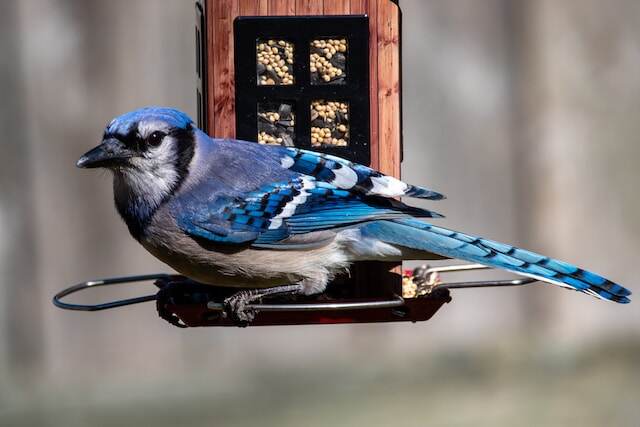
The Role of Insects in a Blue Jay’s Menu
Insects play a crucial role in the diverse menu of the Blue Jay, providing a rich source of protein and essential nutrients.
Blue Jays are known to feed on a wide variety of insects, including beetles, ants, grasshoppers, and caterpillars.
This reliance on insects highlights their importance in the blue jay’s diet and the overall ecosystem.
Additionally, the consumption of insects allows blue jays to benefit from the high biodiversity present in insect species.
This provides them with a diverse range of nutrients, such as vitamins and minerals, that are essential for their growth and survival.
The blue jay’s preference for insects also demonstrates their adaptability as they are able to exploit different food sources depending on their availability.
As we explore blue jays’ love for fruits and berries in the next section, we will see how this adaptability extends beyond insects.
Exploring Blue Jays’ Love for Fruits and Berries
In a display of their adaptable nature, blue jays exhibit a fondness for fruits and berries, resembling avid foragers in their quest for these succulent treats.
These birds have a diverse diet that includes a wide variety of fruits and berries, which they consume both for sustenance and enjoyment.
Blue jays are known to consume fruits such as apples, cherries, grapes, and mulberries, as well as a range of berries including blackberries, blueberries, and raspberries.
Their foraging habits play a crucial role in dispersing seeds, as they often consume fruits and berries and then carry the seeds to different locations before depositing them in their droppings.
This behavior contributes to the natural regeneration of plants and the maintenance of local ecosystems.
Additionally, blue jays’ love for fruits and berries has a positive impact on the plants themselves, as their consumption aids in the process of seed germination by breaking down the hard outer layer of seeds.
This allows the seeds to have a higher chance of successful growth and establishment.
As blue jays continue to explore their foraging habits, their preference for fruits and berries significantly influences the dynamics of local ecosystems.
Transitioning into the subsequent section, it is fascinating to discover that blue jays also have a surprising appetite for small vertebrates.
Surprising Prey: Blue Jays and Small Vertebrates
Among the various surprising aspects of the blue jay’s diet, their unexpected consumption of small vertebrates stands out as a captivating behavior.
Blue jays, primarily known for their preference for fruits and berries, have been observed to exhibit remarkable hunting techniques when it comes to catching small vertebrates.
These birds employ a range of prey selection strategies, including stalking, ambushing, and even pursuing their prey in mid-air.
It is fascinating to witness their agility and precision as they navigate through the dense foliage in search of unsuspecting prey.
While their diet mainly consists of insects, spiders, small reptiles, and amphibians, blue jays have also been known to target small birds and mammals.
Their hunting prowess not only demonstrates their adaptability and resourcefulness but also highlights the significant impact they have on local ecosystems.
By controlling the population of certain species and maintaining the delicate balance of predator-prey relationships, blue jays play a crucial role in the overall health and diversity of their habitats.
Transitioning into the subsequent section about attracting blue jays to your backyard with food, it is important to understand the interplay between their hunting behaviors and their dietary preferences.
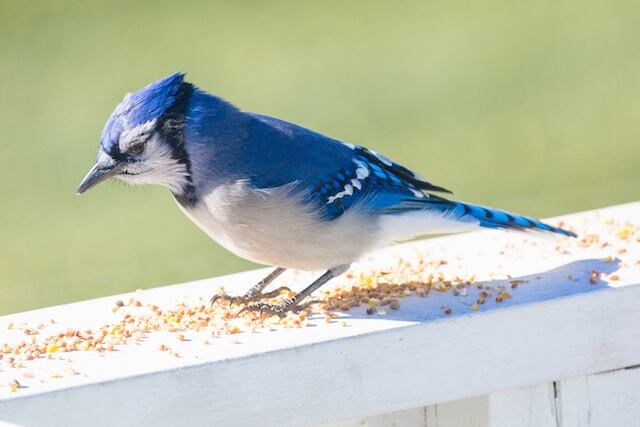
Attracting Blue Jays to Your Backyard with Food
An unexpected and ironic method to entice blue jays to frequent your backyard involves strategically placing an array of delectable food items that align with their dietary preferences.
Attracting blue jays to your backyard through feeding not only provides birdwatching opportunities, but also allows individuals to witness the beauty and antics of these vibrant creatures up close.
Blue jays are known to be omnivorous, consuming a diverse range of foods including nuts, seeds, fruits, insects, and even small vertebrates.
To attract them, one can offer a variety of food options such as sunflower seeds, peanuts, cracked corn, berries, and mealworms.
Additionally, providing a platform feeder or hopper feeder can make it easier for blue jays to access the food.
By strategically placing these enticing food sources, individuals can create a haven for blue jays, bringing nature’s wonders right into their own backyard.
Understanding the nutritional needs of blue jays is crucial to ensure that the food provided is appropriate and beneficial for their overall health and well-being.
Understanding the Nutritional Needs of Blue Jays
Understanding the dietary requirements of blue jays is essential for providing them with appropriate nourishment and fostering their overall health and vitality.
Blue jays have specific nutritional needs that vary throughout the year, particularly during the winter months, when food sources may be scarce.
To ensure their survival during this time, it is important to provide them with a well-balanced diet that meets their nutritional requirements.
Here are four key aspects to consider when understanding the blue jay diet for winter and their feeding schedule:
- Variety of Foods: Blue jays are omnivorous birds, meaning they consume both plant and animal matter. In the wild, their diet consists of a wide range of foods, including nuts, seeds, berries, insects, and small vertebrates. Offering a diverse selection of these food items can help meet their nutritional needs.
- High-Fat Foods: Blue jays require a high-fat diet to provide them with the energy needed to survive the cold winter months. Foods such as peanuts, sunflower seeds, and suet are excellent sources of fats and can be provided in bird feeders to attract and nourish blue jays.
- Calcium and Protein: Blue jays also require adequate amounts of calcium and protein for their overall health and to support the development of strong bones and feathers. Including foods like mealworms, crickets, and calcium-rich supplements can help meet these requirements.
- Feeding Schedule: Blue jays are diurnal birds, meaning they are most active during the day. It is recommended to provide food for them in the morning and late afternoon to coincide with their natural feeding patterns.
Understanding the blue jay’s nutritional requirements and providing a suitable diet is crucial for their well-being.
By offering a variety of foods, including high-fat options, and ensuring they receive sufficient calcium and protein, we can help blue jays thrive during the winter.
| Aspects | Importance |
|---|---|
| Variety of Foods | Offer a diverse selection of nuts, seeds, berries, insects, and small vertebrates |
| High-Fat Foods | Provide peanuts, sunflower seeds, and suet to supply the necessary energy for winter survival |
| Calcium and Protein | Include mealworms, crickets, and calcium-rich supplements for overall health and development |
| Feeding Schedule | Provide food in the morning and late afternoon to align with their natural feeding patterns |
Transitioning into the subsequent section about conservation and the importance of providing food sources, it is evident that understanding the nutritional needs of blue jays is not only beneficial for their individual health but also plays a significant role in their population conservation efforts.
Conservation and the Importance of Providing Food Sources
Conservation efforts for blue jays necessitate the provision of ample food sources to ensure their survival and promote population stability.
Providing food sources for local wildlife, including blue jays, offers numerous benefits. It not only attracts a variety of bird species to your backyard, but also supports the overall biodiversity of the area.
When food availability is limited, bird populations can suffer, leading to a decline in their numbers.
By offering a diverse range of food options, such as seeds, nuts, fruits, and insects, we can help sustain blue jays and other birds in our surroundings.
These food sources not only provide the necessary nutrients for their survival, but also contribute to their overall well-being.
Transitioning into the subsequent section about ‘tips for creating a blue jay-friendly feeding station,’ it is important to consider the various ways in which we can attract blue jays to our backyard and provide them with a reliable and sustainable food supply.
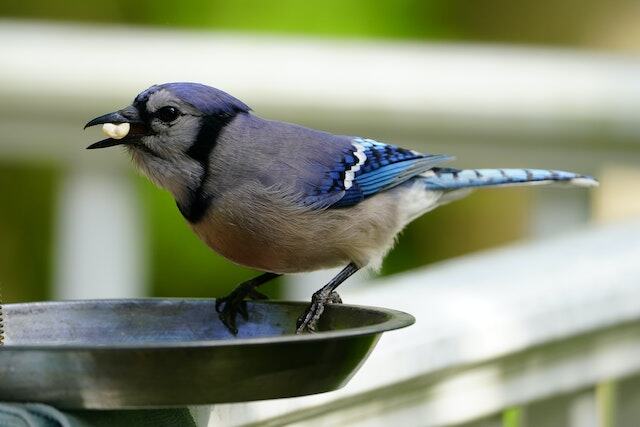
Tips for Creating a Blue Jay-Friendly Feeding Station
To establish a blue jay-friendly feeding station, it is important to strategically place bird feeders with a variety of food options in a quiet and safe location, ensuring that the feeders are easily accessible for the birds while minimizing the risk of predation.
Creating a blue jay-friendly habitat involves selecting different types of bird feeders that can accommodate their feeding habits.
For example, platform feeders are ideal for offering larger food items like whole peanuts or acorns, which are favored by blue jays.
Additionally, tube feeders with larger perches can be used to provide a variety of seeds, such as sunflower seeds or safflower seeds, which are also popular among blue jays.
By offering a diverse range of food options, blue jays will be attracted to the feeding station, and other bird species that are compatible with blue jays’ feeding habits may also be enticed to visit.
This not only benefits blue jays but also contributes to the overall biodiversity of the area.
By creating a blue jay friendly feeding station, individuals can actively contribute to the conservation efforts and enjoy the beauty of various bird species in their surroundings.
Frequently Asked Questions
How can I attract blue jays to my backyard with food?
To attract blue jays to your backyard with food, consider providing bird feeders with options such as sunflower seeds, peanuts, and suet. Additionally, create a bird-friendly environment by offering fresh water, dense vegetation, and nesting spots.
What are the nutritional needs of blue jays?
Blue jays can be attracted to backyards by providing a varied diet that meets their nutritional requirements. Their diet includes insects, fruits, nuts, and seeds. Proper nutrition is essential for their survival and reproductive success.
What other food sources, besides nuts and seeds, do blue jays eat?
Blue jays, apart from nuts and seeds, consume fruits, berries, and insects. These additional food sources provide them with essential nutrients and contribute to their overall dietary needs.
Do blue jays eat insects?
Blue jays do eat insects, in addition to nuts and seeds. Attracting birds to your yard through bird feeding can provide opportunities for bird watching and observing their diverse diet, which includes insects.
Are blue jays known to prey on small vertebrates?
Blue jays, commonly believed to be harmless insectivores, ironically exhibit hunting behavior that includes preying on small vertebrates. This hunting behavior can have a significant impact on local bird populations and also reveals their opportunistic nature as scavengers.
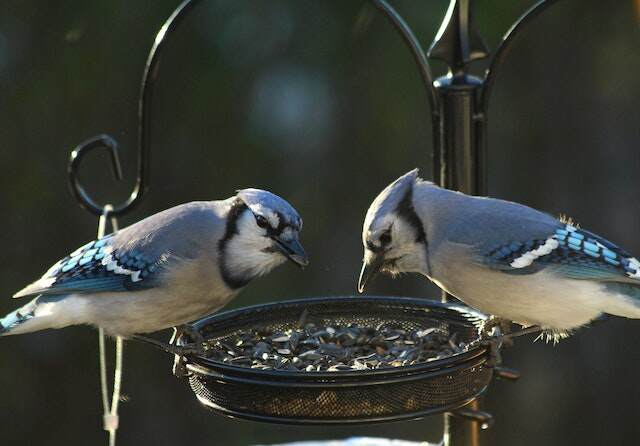
Conclusion
In conclusion, the blue jay’s feeding habits are diverse and adaptable, making them highly successful in finding food sources.
Their omnivorous nature allows them to consume a wide variety of items, including nuts, seeds, insects, fruits, and berries.
Blue jays play an important role in seed dispersal, making them vital for the regeneration of forests and other habitats.
By understanding their nutritional needs and providing food sources, we can attract and support blue jays in our own backyards.
Creating a blue jay-friendly feeding station involves offering a variety of foods such as sunflower seeds, peanuts, mealworms, and fresh fruits.
Providing a constant and reliable food source can help blue jays thrive and contribute to their conservation.
Additionally, maintaining a clean and hygienic feeding area is crucial to prevent the spread of diseases among blue jays and other bird species.
In summary, blue jays have a diverse diet that includes nuts, seeds, insects, fruits, and berries.
They are important seed dispersers and play a crucial role in ecosystem health.
By creating a blue jay-friendly feeding station, we can attract and support these beautiful birds while contributing to their conservation efforts.
So, let us invite these vibrant creatures into our lives and marvel at their beauty and grace as they grace our backyards with their presence.

